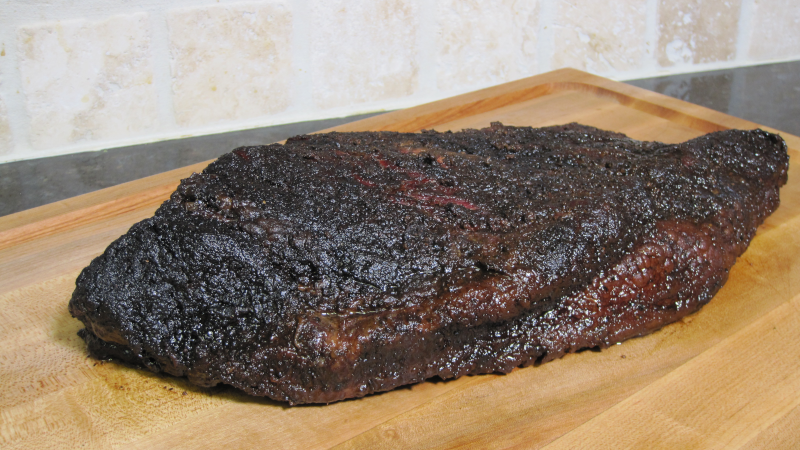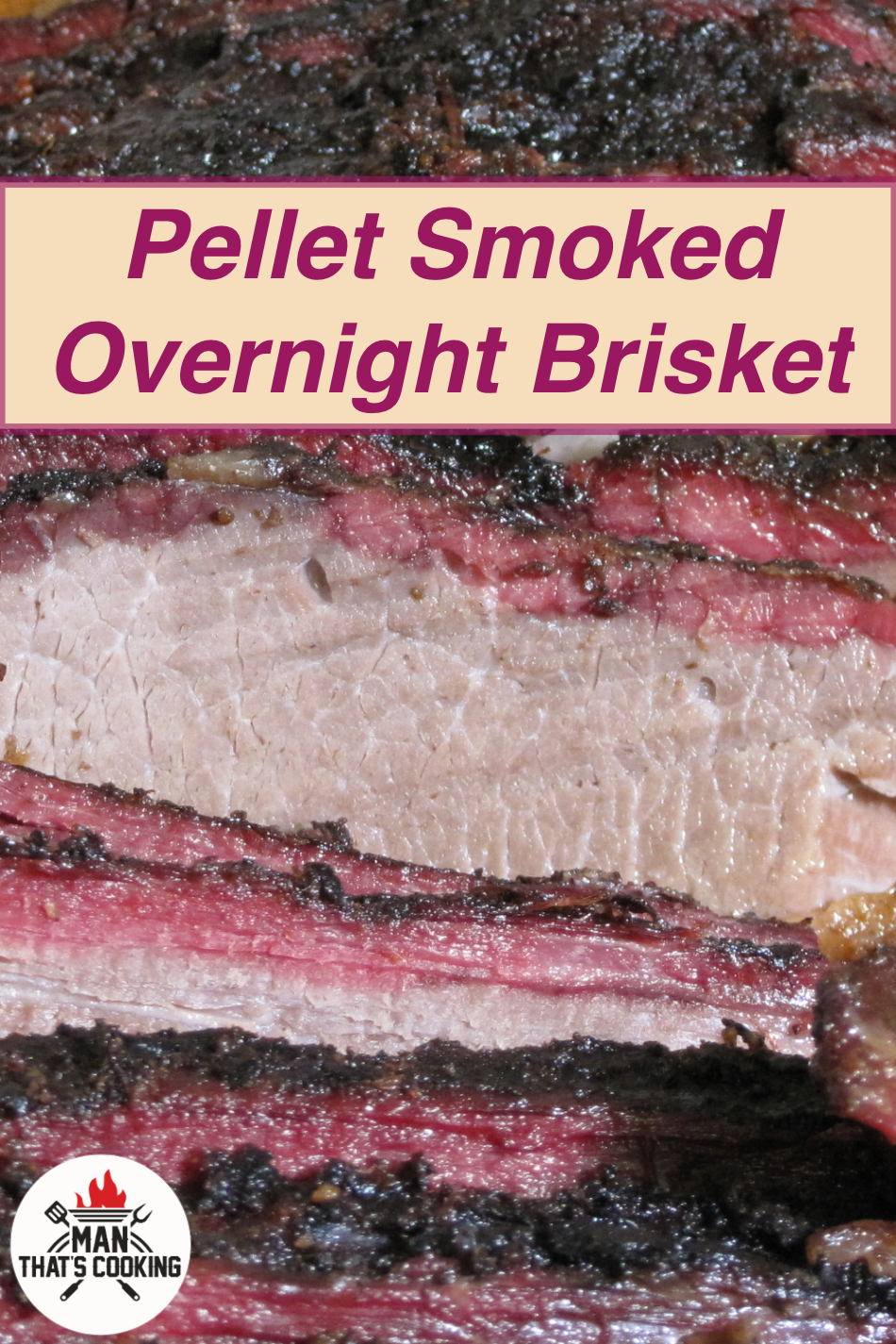Pellet Smoked Overnight Brisket

Cooking a brisket overnight on a pellet smoker is one of the most epic cooks that you can achieve on this cooking machine. There is no fire to tend to like an offset smoker would have you do, so you just fill the pellet hopper to the max and sleep till morning. But let’s be real, the sleep won’t be so good especially if you spent some big coin on a prime brisket. You can reduce your sleep anxiety by using a wireless thermometer and setting a 202 F max temp alarm for the brisket and a 180 F low temp alarm with an ambient probe for the smoker. If you are a heavy sleeper you probably should set the brisket max temp alarm at 155 F to wake you when the brisket nears the stall stage. Keep in mind this stall temp could range from 145 – 175 F so you will need to observe the temp around this time. This temp should hit sometime in the early morning so be ready to get out of bed and tend to your cook. Wrapping a brisket will allow it to get past the stall stage and it will make the meat tender by braising it in its juices. You can wrap the brisket with aluminum foil or butcher paper. If you choose aluminum foil, the seasoning bark may wash off somewhat from trapped steam. On the other hand, butcher paper will allow some moisture to escape giving you a thick bark. When the brisket reaches between 202 – 205 F in both the point and flat, take additional readings with a handheld thermometer to confirm this temp. You can also tell when the brisket is ready by feel. When the temp probe slides into the meat like butter with little resistance, then it’s done. When this happens you need to place the brisket in a cooler and let it rest for at least 1 to 2 hours. After this rest period it is ready to unwrap, slice against the grain and enjoy.
Man That’s Cooking
Ingredients
- 12 – 15 pound full packer brisket (choice or prime)
- 1 – 2 tablespoons worcestershire sauce
- 1/4 cup beef brisket seasoning
Directions
First, using a flexible boning knife trim the discolored edges off the brisket on all 4 edges.
Next trim all hard fat from the brisket on all surfaces. Keep the fat cap side in place but reduce any hard buildup fatty areas. You want to avoid scalping the fat into the meat but leave 1/4 inch of a fat layer.
Next rub down one side with a coating of worcestershire sauce and then apply your favorite BBQ rub. Flip the brisket to the other side and repeat. Wrap the brisket in cellophane wrap and refrigerate several hours, ideally 5 hours.
Around 11 pm, remove the brisket from the refrigerator and allow it to warm on the countertop for 15 minutes. Start the smoker at 230 F using hickory pellets and a fully loaded hopper. Ideally this will be a 20 pound bag of pellets. Place the brisket on the top rack if you have one, with the fat cap down and the point facing the hot spot such as the exhaust. Place a temp probe in the point and set the alarm for 155 F and set an ambient probe temp for 180 F low alarm.
When the alarm alerts, monitor the temperature for a few minutes to see if it stays nearly the same. When this happens, wrap the brisket in two overlapping strips of butcher paper. Place the brisket back on the smoker and re-insert the temperature probe(s). Increase the smoker temperature to 250 F. Increase the brisket alarm max temp to 202 F. Check the pellet level in the hopper and add any if needed.
Continue to cook until the temperature probes signal the alarms. At this point, move the probes around to get additional readings and take an average of those readings. Some areas will be higher in temp than others, and you want to go with the mid to lower temp areas as your current temp. When the brisket reaches temp the meat will be very tender and the temp probes will slide in like butter. If that is not happening, you need to continue the cook and re position the temp probe.
When the brisket reaches temperature and the meat is tender, place it in a small cooler and let it rest 1 to 2 hours. If you have a large cooler, wrap the brisket in a towel to keep it insulated.
After the resting period, slice the brisket against the grain, usually starting diagonally from the lower flat corner. Turn the point and slice it against the grain.
 Print This Recipe
Print This Recipe
Watch How To Make This Recipe





